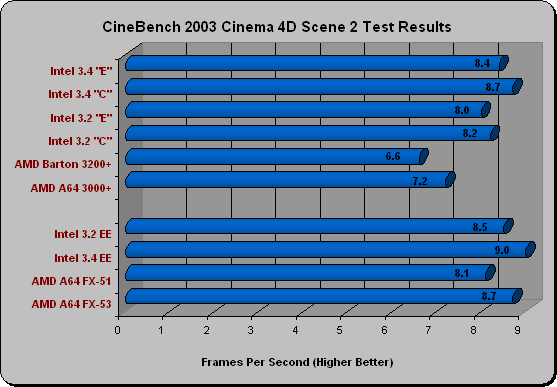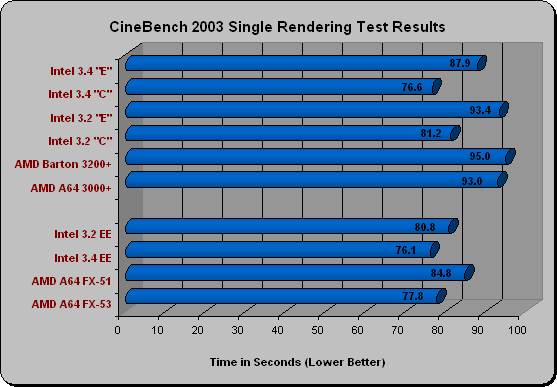Prescott’s Back — 3.4GHz
Professional Testing:
MAXON; CINEBENCH 2003:
CINEBENCH 2003 is the free benchmarking tool for Windows and Mac OS based on the powerful 3D software CINEMA 4D R8. The tool is set to deliver accurate benchmarks by testing not only a computer’s raw processing speed but also all other areas that affect system performance such as OpenGL, multithreading, multiprocessors and Intel’s new HT Technology. Again, higher Frames/Second and lower rendering time in seconds equal better performance.



Results:On OpenGL and Cinema 4D the Intel C and E processors battle it out neck to neck, but when it came to the single rendering test the Northwood (“C”) took a demanding lead over the equally clocked Prescotts.
Case Lab CFD Solver:
The benchmark testcase is the AGARD 445.6 aeroelastic test wing. The wing uses a NACA 65A004 airfoil section and has a panel aspect ratio of 1.65, taper ratio of 0.66, and a quarter-chord sweep angle of 45. This AGARD wing was tested at the NASA Langley Research Center in the 16-foot Transonic Dynamics Tunnel and is a standard aeroelastic test case used for validation of unsteady, compressible CFD codes. The CFD grid used to model this problem consists of 67,435 nodes and 366,407 tetrahedral elements.

Results:The 3.4GHz Prescott is roughly 20 seconds faster than the 3.4GHz Northwood when solving the Case Lab STARS CFD.
Standard Performance Evaluation Corporation; SPECviewperf 7.1.1:
SPECviewperf 7.1 is a professional OpenGL rendering benchmark that can evaluate the performance of OpenGL rendering in a professional workstation environment.

Results:No significant changes on SPECviewperf with the speed increase.

Comments are closed.